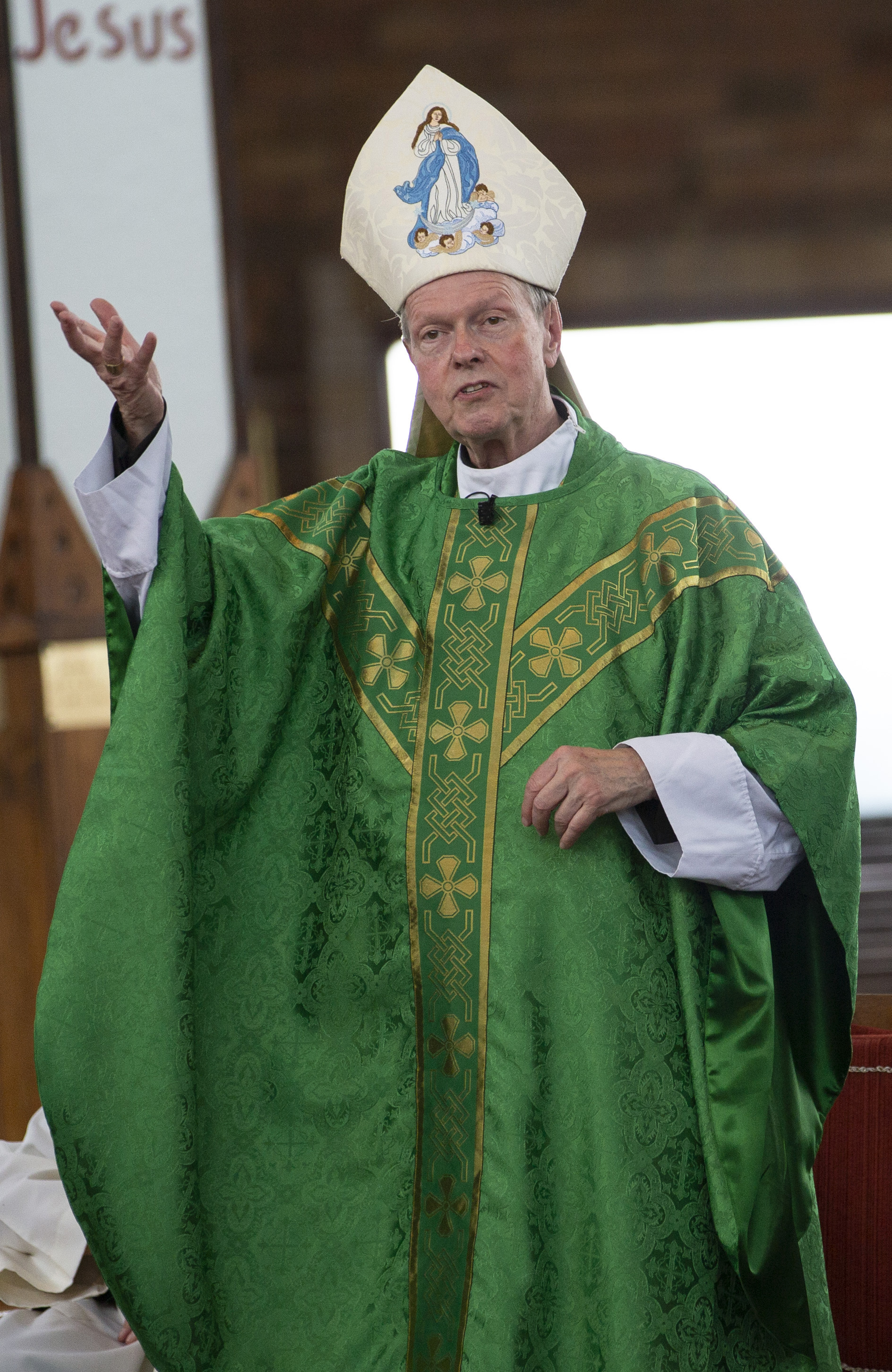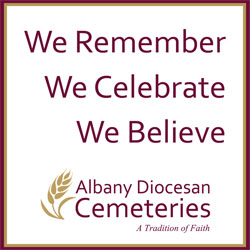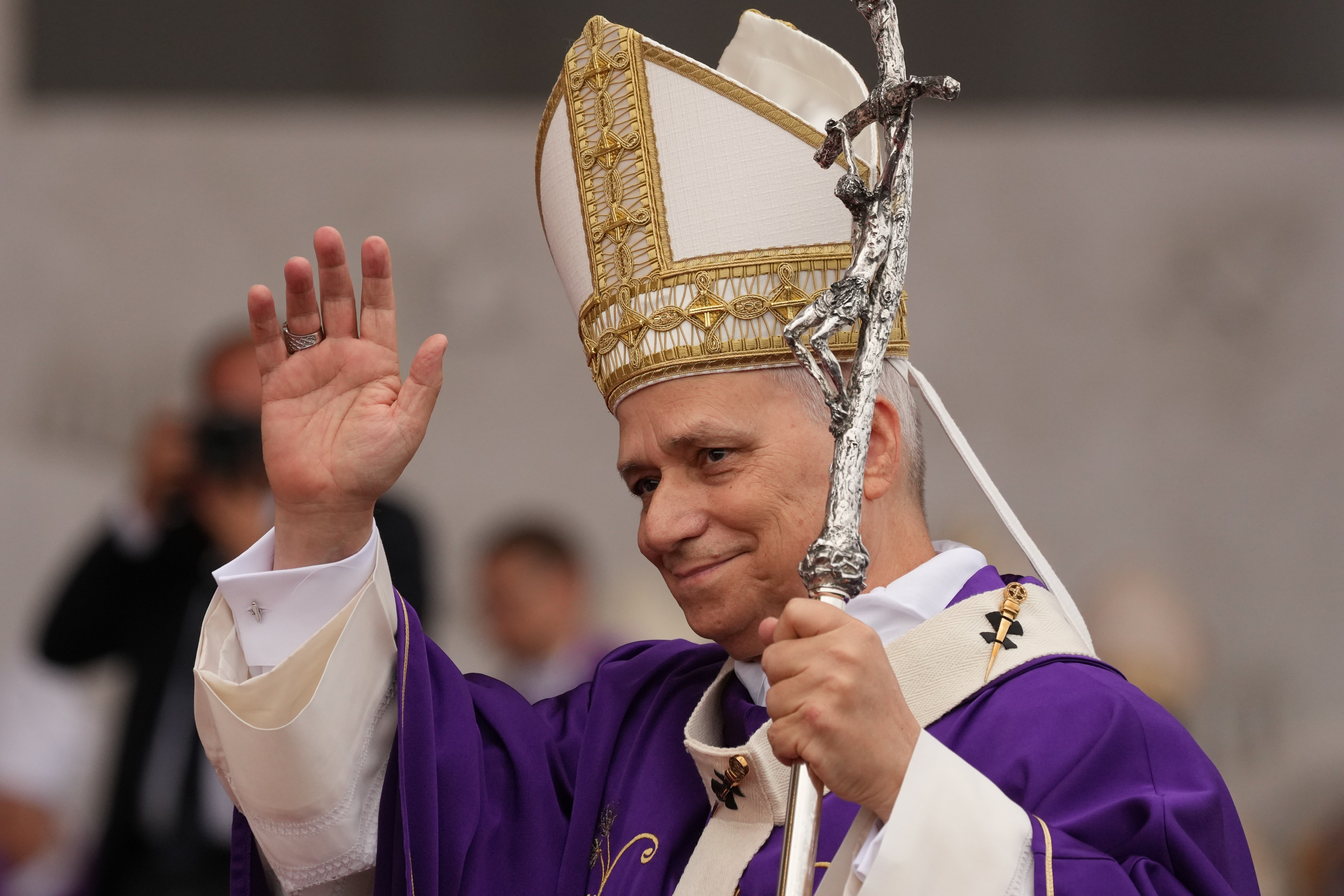December 4, 2019 at 5:17 p.m.
Father Dan Quinn, pastor of St. Paul the Apostle in Hancock, embarked on the Camino de Santiago in Spain, a walk of 500 miles from St. Jean-Pied-de-Port in the southwest of France to the tomb of St. James (“Santiago”) at Santiago de Compostela in northwestern Spain. He started his journey on Aug. 29 and arrived on Oct. 2. This is the final article in a series of weekly remembrances.
Day 29
From Pieros to O Cebreiro, we walked 34.6 km (21.5 miles) today, which is more than average for the Camino. But although it was long, and we got in later than I had hoped, my body has gotten accustomed to the walking. It was also a nice walk. We started downhill, in the dark with our flashlights, and lost our way because we couldn’t see the signs, but at least we lost our way together. I was with the two people with whom I had been walking for a couple of weeks, and we could see pilgrims about an eighth of a mile ahead of us and about an eighth of a mile behind us, evidenced by their flashlights and that they were crazy enough like us, to be walking at 6:30 in the morning in the dark. Eventually we found that we were not far off the way, and regaining it, went through the city and then along shaded highways through little villages, and then up a big hill through the woods to the hilltop town of O Cebreiro. It was a good day to walk barefoot. That is, until crossing provinces, from León to Galicia. Each province takes care of the path differently. While the last, steep, rocky climb was a relatively easy climb barefoot, needing only to avoid stepping in the many piles of horse droppings, as soon as Galicia took over care of the trail it was all gravel, which is really painful to walk barefoot! So the shoes went on. Thankfully they fold up in my bag.
Galicia is immediately distinctive from the rest of the Spanish provinces I had seen. Throughout the province there are Celtic symbols, bagpipes and overcast days punctuated with rain showers. What I had heard about the similarity of the Gallic countries (Ireland, Western France, Northeast Spain, Galatia), I see that to be true.
Day 31
When we got to Sarria, we approached the 100 km (62.1 miles) mark, which is where many people begin their pilgrimage because it is the minimum necessary to be given a Compostela; a certificate saying you have been a pilgrim to the tomb of St. James. It was easy to tell who the new pilgrims were. First of all, they had faces we hadn’t seen before. Even though I didn’t (or couldn’t) speak with all the pilgrims along the way, I had gotten used to seeing them. These people were unfamiliar. They were also more talkative, as they hadn’t yet let weeks of the Camino instill in them an enjoyment of silence in nature. They were cleaner than us. Their feet didn’t hurt as much. They had no blisters yet. They weren’t tanned on only the left half of their bodies. They hadn’t yet lost weight and gained leg muscle. They had a harder time communicating with the locals. They took a lot more photos. This all happened to us 600 km (372 miles) ago; and the new pilgrims barely have time for it to happen to them. But now I know what I looked like on my first day to the pilgrims who had already been walking for a month.
Day 36
We arrived in the afternoon at Monte del Gozo, and so tomorrow I have only 4 km (2.5 miles) to go to get to the Cathedral of Santiago.
Day 37
Wow! Arriving in Santiago is a very emotional experience for many people. After taking time in the plaza in front of the Cathedral to bask in the glory of arriving and to pray, we went to the pilgrim office for our Compostelas. We found an albergue, dropped our bags, and headed to the Pilgrim’s Mass, which happens every day at Noon. The Franciscan monastery, the Church of San Francisco, was packed with pilgrims who had come to Santiago from many different routes, and there were a number of police officers (la guarda) in dress uniforms in the front of the church. Today was the feast of the Guardian Angels, a patronal feast of police departments, so there was a special presentation and blessing for them. This for me was the culmination of the trip, except for the visit to the tomb, which I would do later.
We found a place for lunch. We sat outside and started attracting people we had met along the way to sit and catch up and eat. Without anywhere in particular to go and without the need to do anything, we could just sit around and get to know each other a little better. But eventually, inevitably, siesta came, and the restaurants and businesses closed. So I went to make my first real visit to the cathedral. This year, the cathedral is under restoration and renovation and is filled with scaffolding. So the Masses and everything else that usually takes place there has been divided up among the other churches and monasteries in town. But there were still candles to be lit, and a place to pray, and, of course, the tomb to visit. To visit the tomb, first the line goes past the statue of Santiago, St. James, which looks over the sanctuary and the cathedral. The tradition is that the pilgrims give him a hug before continuing below to the crypt with the reliquary that holds St. James’ remains. There I prayed in thanksgiving for myself and my fellow pilgrims for a safe pilgrimage, and for helping us to arrive, and for all the pilgrims still on their way, including those who may have only just begun.
That night, some of my compañeros del camino and I made arrangements for dinner. We had planned for about eight people, but people invited people and suddenly we’re at a table for 14! It was an excellent meal, with great conversation, and afterward some of us went looking for a local gourmet ice cream parlor. We went to bed that night looking forward to sleeping in and not having to walk anywhere the next day.
Over the next two days, I explored Santiago, went to Mass in different places, including the parish named after James & John’s mother, toured the museums, got a massage, bought one souvenir, and met more familiar faces who had just arrived. On one of those days, there arrived into the plaza a group of pilgrims in wheelchairs. This was an event put together after the success of a 2016 documentary named “I’ll Push You,” about a man pushing his friend in a wheelchair along the Camino. This group did the last 100 km from Sarria together, with friends and volunteer nurses. We knew they had had some injuries along the way, as we had spoken before with one of the nurses, so we cheered them on for the last 100 meters and celebrated with them.
The next day, I said goodbye to a lot of people I met along the way. I walked a couple of them to their buses, and thought it strange that I wouldn’t be seeing them every day anymore. It also started to occur to me that I had a wedding at my parish the next week, and that I have a closet full of more clothes than just the two sets I have worn for the past month. I also have an email account that I have not checked since August. I have gotten used to this being my new normal, and am sad to have to give it up. The people, the food, the silence, the daily routine, the lack of most administrative responsibilities; soon I will have to go back.
But not quite yet. After Santiago, many people choose to continue to walk three more days to the west coast, to Finisterre (finis-terra, literally “the end of the earth”). Instead, I walked three days more to the north coast, to A Coruña, a large port city that pilgrims from Ireland and England historically sailed to en route to Santiago. There, I saw the lighthouse built by the Romans in the second century and walked into the cold Atlantic water. I spent the night, and took a taxi to the airport for my flights home. This was the first time in 46 days - when I got off the train 550 miles away in St. Jean-Pied-de-Port - that I had been in any sort of motor vehicle.
This is a pilgrimage I would recommend to anyone and I believe anyone could do it. It has its pains and its difficulties, and there’s a lot that has to be given up to accomplish it, but I think that it would benefit anyone who attempted it.
- Avatar: Fire and Ash
- Washington Roundup: Trump suspends green card lottery; health care subsidies set to expire
- Catholic actor finds Christmas joy in helping US charity
- Trending: A (young) revival in the faith?
- Upcoming symposium gives nod to St. John Paul II’s ‘Letter to Women’
- Experts offer strategies for connection during Christmas amid US ‘epidemic’ of loneliness
- A new rider at the helm: Bishop Richard Moth named archbishop of Westminster
- Cardinal Pizzaballa visits Gaza City’s Holy Family Parish before Christmas
- Daughter of Jimmy Lai: Don’t let my father become a martyr for truth and for freedom
- Pope Leo appoints Queens pastor as Palm Beach bishop, and Vietnam-born priest as auxiliary in Phoenix








Comments:
You must login to comment.